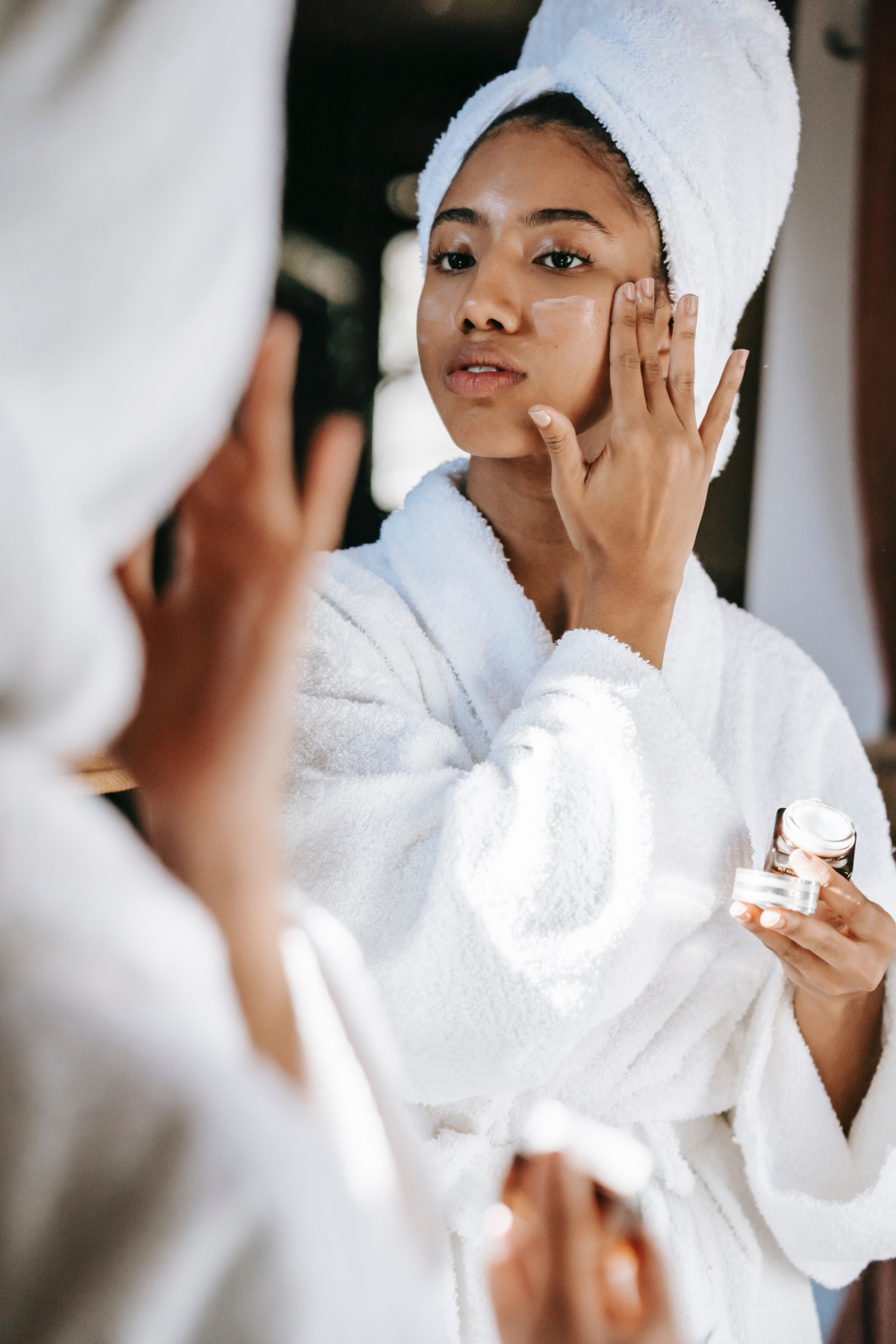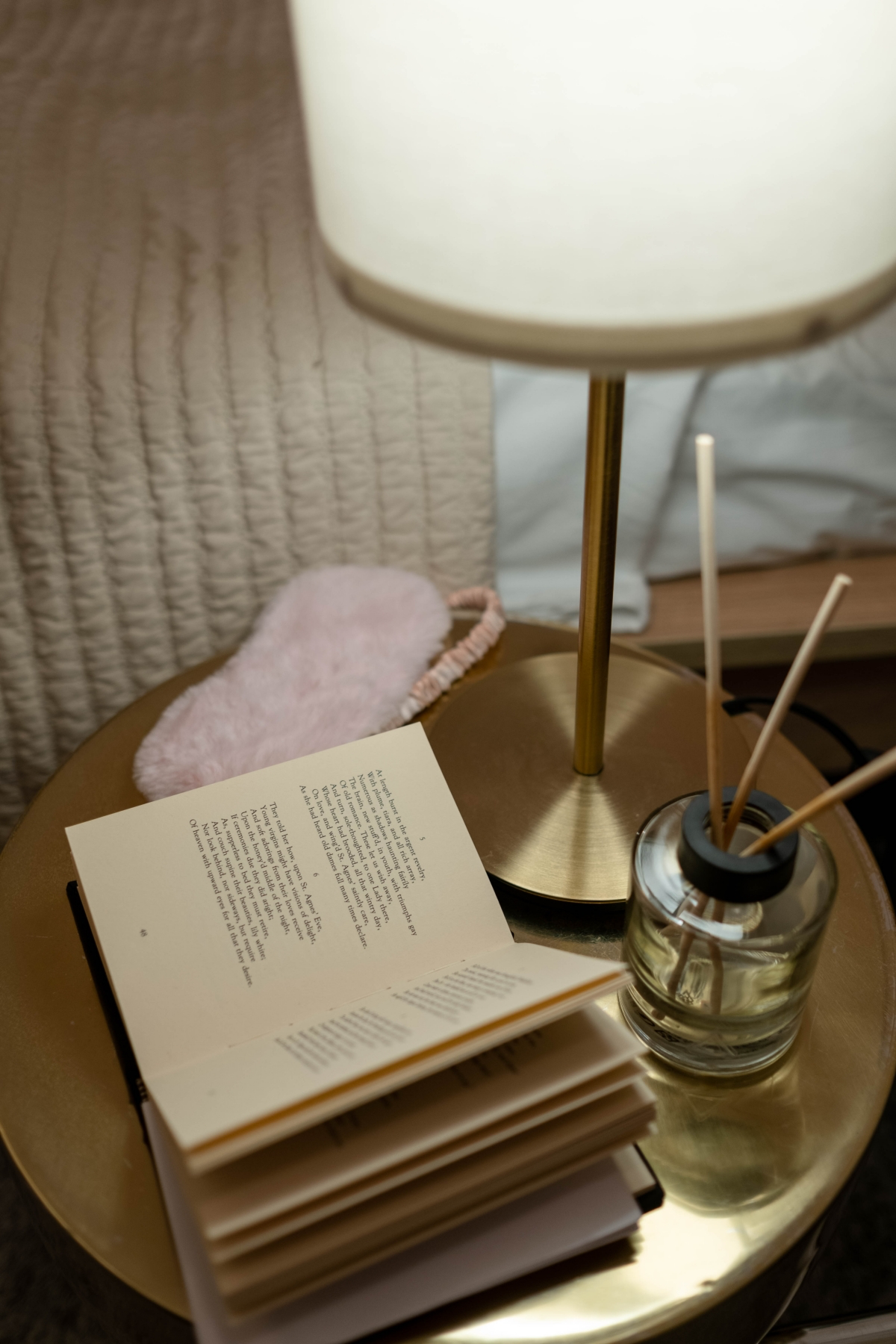More Than ‘Winter Blues’: A Realistic Plan for Managing Seasonal Mood Shifts
You know that feeling, right? As the days get shorter and a certain chill creeps into the air, something inside you just… shifts. That vibrant summer energy seems to pack its bags, and in its place, a quieter, more withdrawn feeling moves in. For a lot of us, it’s just a minor change of pace. But for others, it feels like a heavy blanket descends in the fall and refuses to lift until spring.
In this article
This predictable, seasonal dip is a very real thing, often called Seasonal Affective Disorder, or SAD. And let’s be clear: it’s so much more than just the “winter blues.” It’s a genuine biological response that can throw your daily life for a loop. Over the years, I’ve seen how tough it can be, but I’ve also seen how the right strategies can completely change the game. This isn’t about finding some magic pill. It’s about understanding what’s happening in your body and using proven tools to fight back. My goal here is to share the kind of insights the pros use so you can build a stable and, dare I say, enjoyable winter for yourself.

The ‘Why’ Behind It: What Winter Actually Does to Your Body
To get a handle on this, you first have to grasp why it happens. It’s not a personal failing or a sign of weakness. Honestly, it’s a biological reaction to a huge environmental change: less sunlight. Scientists are still fine-tuning the details, but the main theories are pretty solid. Getting this part down is the first step toward taking back control.
1. Your Body Clock Gets Confused
Your body runs on an internal 24-hour clock called the circadian rhythm. This little master clock controls your sleep-wake cycle, hormones, and even your mood. It gets its daily instructions from light. A blast of bright morning light basically tells your brain, “Okay, it’s go-time! Be alert, be active.”
But in the fall and winter, you often wake up when it’s still dark outside. That missing signal can make your internal clock drift out of sync. Your body doesn’t get the clear message to wake up, leaving you feeling groggy and sluggish. It’s a frustrating mismatch between how you feel and what the clock on the wall says.

2. The ‘Feel-Good’ Chemical Dips
Serotonin is a key chemical messenger in your brain that helps manage your mood. Think of it as the key that unlocks feelings of well-being. Here’s the catch: sunlight helps your brain produce and use it effectively. Studies show that during winter, people prone to SAD have less active serotonin available. With fewer of those ‘keys’ around, it’s no wonder you feel down.
3. The ‘Sleep’ Hormone Goes Into Overdrive
Melatonin is the hormone that makes you sleepy, and it’s produced in response to darkness. When winter days are dim and short, your body can start pumping out melatonin way too early or for too long. This is a huge reason for that classic SAD lethargy and the overwhelming desire to just stay in bed. It’s your sleep cycle getting completely out of whack.
4. The ‘Sunshine Vitamin’ Vanishes
We all know Vitamin D is important for bones, but modern research shows it’s also critical for brain function and mood. Your skin makes it from sun exposure. The problem? During winter, especially if you live far from the equator, it’s pretty much impossible to get enough sun to maintain good levels. This deficiency is strongly linked with symptoms of depression, making it a key piece of the puzzle.

Pro-Level Techniques for a Better Winter
Once you understand the science, the treatments make perfect sense. They aren’t random guesses; they are targeted fixes for the biological issues we just talked about. These are the front-line strategies that experts recommend.
1. Light Therapy: Your Personal Sunrise
This is the gold standard for a reason. It directly tackles the root problem: not enough light. Light therapy is all about sitting in front of a special light box every day to trick your brain into thinking it’s a bright, sunny morning. This helps reset your body clock and boost that all-important serotonin.
Here’s how to do it right:
- Get the Right Brightness: You need a lamp that puts out 10,000 lux. To give you some perspective, a normally lit room is only about 300-500 lux. A regular desk lamp won’t cut it.
- Timing is Everything: This is the most crucial part. Use the light box for 20-30 minutes within the first hour of waking up. Using it in the afternoon can mess with your sleep, so stick to the morning.
- Position it Correctly: Place the box about 16-24 inches from your face, off to the side. You don’t stare directly into it! The light just needs to enter your eyes indirectly while you eat breakfast, read, or check emails.
- Choosing a Device: Expect to invest between $50 and $150 for a quality 10,000 lux lamp. Look for reputable brands like Verilux or Carex, which you can find on Amazon or specialized wellness sites. Make sure it filters out UV light to protect your eyes and skin. It’s an investment that pays off for many winters to come.
Heads up! While it’s super effective, it’s a good idea to chat with your doctor before starting. For people with certain eye conditions or bipolar disorder (it can trigger hypomania), medical clearance is a must. Most side effects are minor, like a mild headache at first, but it’s always best to be safe.

2. Talk Therapy (CBT-SAD): Rewiring Your Winter Mindset
While light therapy fixes the biology, a specialized form of Cognitive Behavioral Therapy (CBT-SAD) tackles the psychology. It’s been shown to be just as effective as light therapy, but with a huge bonus: the skills you learn are permanent.
It focuses on two key things:
- Changing Your Thoughts: It helps you catch and challenge those automatic negative thoughts about winter. For example, you can learn to reframe “Winter is going to be four months of misery” into something more balanced like, “Winter is a different season, and it’s a chance to focus on indoor hobbies I enjoy, like cooking or reading.”
- Changing Your Actions: This part is a game-changer. It’s called behavioral activation. Instead of waiting to feel motivated, you schedule pleasant activities to create motivation. I once worked with someone who was completely paralyzed by winter dread. We started with just one small goal: scheduling one phone call with a friend each week. That tiny step broke the inertia and made bigger changes feel possible.
By the way, finding a therapist who specializes in this is easier than you think. You can check directories like Psychology Today. Sessions can run anywhere from $100 to $250, so it’s a good idea to check what your insurance might cover.

Light Therapy vs. Talk Therapy: Which is for You?
So, you have two main options. How do you choose?
Light Therapy is really a biological hack. It’s best for people who need a fast-acting solution to the physical symptoms like lethargy and oversleeping. You can usually feel a difference within a week or two. The downside? You have to do it every single day, every single winter.
CBT-SAD, on the other hand, is a long-term psychological tool. It’s perfect for people who want to change their relationship with winter for good. It takes more effort up front, but after a season or two of practice, many people can manage their symptoms on their own, without needing the lamp or therapy every year.
Honestly, the best approach often involves using both at the same time.
3. Vitamin D Supplementation: A Guided Approach
Just grabbing a bottle of Vitamin D off the shelf is like throwing darts in the dark. A smarter approach is much more precise.

- Get Tested First: Ask your doctor for a simple blood test (it’s called a 25-hydroxy vitamin D test) to see where your levels are. You can’t fix a problem you haven’t measured.
- Get the Right Kind: The research is pretty clear that Vitamin D3 is more effective than D2. Most supplements you’ll find will be D3.
- Dose Smartly: Your doctor will recommend a dose based on your test results. A typical daily dose is often between 1,000 and 2,000 IU, but if you’re deficient, you might need a higher dose for a while.
A quick but important warning: more is NOT better. Vitamin D is fat-soluble, meaning your body stores it. Taking crazy high doses without medical supervision can lead to toxicity. Always work with a pro on this.
Your Daily Toolkit: Practical Lifestyle Habits
Beyond the clinical stuff, your daily habits are your foundation. These simple routines support all the other work you’re doing.

Overwhelmed? Start With These 3 Things This Week:
If this all feels like a lot, don’t worry. Just focus on these three small steps to get started.
- Have your morning coffee or tea right next to a window. Just 15 minutes of natural morning light helps.
- Take one 20-minute walk during your lunch break. Even if it’s cloudy, the outdoor light is powerful.
- Call your doctor’s office and ask about getting a Vitamin D test. It’s a simple, proactive step.
Craft a SAD-Proof Daily Routine
People with SAD thrive on routine because it helps stabilize that wobbly body clock. A predictable schedule can make a world of difference.
For example, a solid day might look like this:
- 7:00 AM: Wake up at the same time every day. Yes, even on weekends!
- 7:05 AM: Immediately turn on your 10,000-lux light box while you make coffee and breakfast.
- 7:45 AM: Head out for a brisk 15-20 minute walk before starting work.
- 1:00 PM: Eat lunch at a consistent time.
- 9:00 PM: Start a wind-down routine. Put away bright screens (the blue light messes with melatonin!) and do something relaxing.

Common Pitfalls & How to Fix Them
It’s easy to fall off the wagon. Here are a couple of common traps and how to get out of them.
- The Pitfall: “I keep forgetting to use my light box.”
The Fix: Habit-stack! Don’t try to create a new routine from scratch. Instead, ‘stack’ this new habit onto one you already have. Put the lamp right next to your coffee maker or your toothbrush. You won’t start your coffee until the light is on. Problem solved. - The Pitfall: “I tried for a few days and didn’t feel better, so I gave up.”
The Fix: Set realistic expectations. Light therapy can take 1-2 weeks to really kick in. CBT takes even longer. Give the process time to work. Consistency is far more important than intensity.
A Final, Important Note on Safety
This guide is here to give you information and options, but it is absolutely not a substitute for professional medical advice. My single most important piece of advice is to connect with a healthcare provider.
You should see a doctor immediately if:
- You are having any thoughts of harming yourself. This is a medical emergency.
- Your symptoms are so severe that you can’t get to work, get out of bed, or care for yourself or your family.
- You notice dramatic changes in your weight or sleep.
A formal diagnosis matters. Symptoms like fatigue can also be caused by other issues like an underactive thyroid or anemia. A doctor can run tests to make sure you’re treating the right thing. They can also connect you with the full range of treatments, like medication (SSRIs are commonly used for severe SAD) and therapy that you can’t access on your own.
Look, managing seasonal mood shifts is a marathon, not a sprint. It takes preparation and commitment, but having a stable and even happy winter is completely possible. When you understand what’s happening and build a toolkit of reliable strategies, you can take back control and feel steady all year round.
Inspirational Gallery
The Therapy Powerhouse: A dedicated light box, like the popular Verilux HappyLight, is a clinical tool. It delivers a direct, powerful 10,000 lux of UV-free light to mimic the sun and reset your body clock during a focused 20-30 minute session.
The Gentle Awakening: A sunrise alarm clock, such as the Philips SmartSleep, takes a different approach. It integrates into your life by gradually illuminating your room before you wake up, simulating a natural dawn to rouse you gently.
The choice depends on your lifestyle: a targeted therapy session or a seamless, atmospheric addition to your morning routine.
According to the National Institute of Mental Health (NIMH), a key factor in SAD is the overproduction of melatonin, the hormone that regulates sleep. The extended darkness of winter can signal the brain to produce more of it, leading to lethargy and sleepiness during the day.
Can what I eat really make a difference with seasonal mood shifts?
Absolutely. Think of it as nutritional support for your brain. Serotonin, the ‘feel-good’ neurotransmitter, is largely made from the amino acid tryptophan. Boost your intake with foods like turkey, nuts, seeds, and cheese. Also, Omega-3 fatty acids, found in fatty fish like salmon and mackerel, are crucial for brain function and have been shown to help alleviate depressive symptoms. It’s not a cure, but it’s a foundational piece of the puzzle.
A key mistake: Waiting until you feel low to act. The most effective approach to managing seasonal shifts is proactive, not reactive. Begin incorporating mood-supporting habits—like morning light exposure and regular exercise—in the early autumn, before the shorter days fully take hold. This helps build resilience and can lessen the severity of the dip when it arrives.
- A profound sense of security and contentment.
- A tangible reduction in feelings of anxiety.
- The ability to find genuine pleasure in the quiet moments.
The secret is a conscious practice: the Danish concept of ‘hygge’. It’s about creating an atmosphere of warmth and comfort. Think less about interior design and more about sensation—the feel of a soft wool blanket from IKEA, the flicker of a beeswax candle, the warmth of a mug of herbal tea.
Beyond light, scent is a powerful and direct path to influencing your mood. Create a ‘scent-scape’ to support your emotional state. Try diffusing uplifting citrus oils like Bergamot or Grapefruit in the morning to energize, and calming, grounding scents like Cedarwood or Frankincense in the evening to wind down. A high-quality diffuser, like those from NEOM Organics, can make this a seamless part of your daily ritual.
A study in the American Journal of Geriatric Psychiatry found that an hour-long walk outside in winter, even on an overcast day, was as effective as light therapy in improving mood, sleep, and reducing depression in SAD patients.
This highlights the powerful synergy of getting what natural light is available combined with physical movement. Don’t underestimate the impact of bundling up and getting out, even for a short period. The crisp air and change of scenery alone can be a powerful antidote to feeling stuck indoors.
While technology can be a drain, certain apps are purpose-built to help. Consider a subscription to Headspace for guided meditations specifically addressing sadness, or use the DARE app for its practical approach to handling anxiety. For a gentler, gamified approach, Finch allows you to grow a virtual pet by completing small, real-life self-care goals, turning daunting tasks into achievable wins.
The single most stabilizing force during the winter months can be a consistent sleep schedule. Going to bed and waking up at the same time every day—yes, even on weekends—helps to anchor your body’s internal clock, or circadian rhythm. When your external world is dark and confusing for your biology, this internal consistency becomes a powerful signal of stability, improving sleep quality and daytime energy levels.










